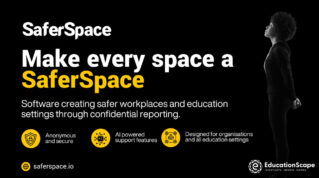Equality Impact Assessments (EIAs) are used to assess the potential (usually negative) impact of policies, practices, or decisions on protected groups, as set out in the 2010 Equalities Act. The purpose of EIAs is to identify, understand, and put actions in place to reduce, any negative impacts or inequalities that could impact specific groups.
Some institutions have questioned the need for EIA’s and stopped conducting them altogether. However, I believe they remain a crucial tool in ensuring that FE institutions uphold their commitment to fairness, diversity, and inclusivity.
EIA’s should be an opportunity to upgrade a neutral impact into a positive one. While protected groups should always be considered, individual colleges have the gift to include other groups; the care experienced, economically deprived, young carers, and Gypsy, Roma and Traveller students. It may be that you want to include students from particular postcodes.
EIA’s should inform decision making and never be completed retrospectively. Good EIA’s will help you promote inclusivity by actively working to ensure that policies and practices promote equality, diversity, and inclusion.
In FE we serve a diverse range of students. EIAs help ensure that all students, regardless of their characteristics, have equal access to opportunities, support, and resources. An inclusive environment supports better student outcomes, engagement, improved wellbeing and retention across diverse student groups.
For example, EIAs may highlight the need for additional learning support for students with disabilities or ensure that teaching materials reflect a diverse range of perspectives.
EIA benefits
- FE institutions can identify how resources (such as support services, teaching materials, and facilities) are allocated and ensure that all students have equitable access.
- Colleges that demonstrate commitment to equality and diversity are seen as more socially responsible and ethically sound. This can enhance their reputation and build trust with students, staff, and the wider community.
- FE institutions can create more welcoming environments that foster a sense of belonging for all students.
So how do we ensure EIA’s are meaningful and not another tick box exercise?
- Early on, involve students, staff, and community representatives in the assessment process, especially those from underrepresented or marginalized groups. Use their insights to understand the real-world impacts of policies and practices, rather than just assuming what might be relevant.
- Senior managers faced with completing an EIA may simply be ill-equipped to know how certain groups will be impacted by the policy they are proposing. Rather than expecting them to know everything about everyone, offer them support and guidance. You hopefully already have established staff resource groups, student groups and EDI professionals within your organisation that can form a panel to be a “critical friend” and help them look at their proposal from different perspectives.
- Offer resources and guidelines to ensure assessments are carried out with genuine consideration of diverse needs.:
- Collect and analyse relevant data on the student population, including information on race, gender, disability, socioeconomic status. Use this to identify any gaps in provision.
So, you have completed your EIA and the policy has been approved.
Now, you should ensure that the findings of the EIA lead to concrete actions. Address identified issues in practice, and allocate resources to make necessary changes.
EIAs should be viewed as an ongoing process, not a one-time event. Regularly update them in light of new information, changing student demographics, or emerging challenges.
And continuously evaluate the effectiveness of policies and practices to ensure they remain equitable.
Create culture of continuous improvement:
Foster a culture where EDI are seen as core values rather than compliance obligations.
Encourage feedback loops from students and staff, and actively work on improving the institution’s approach to equality and diversity based on ongoing assessments.
Share the results of EIAs with the wider community. Transparency helps build trust and ensures that the process is taken seriously. Be clear about how you will try to mitigate any negative impacts. The fact that you have recognised them will be appreciated.
Publicly commit to addressing any identified gaps or challenges, and communicate what actions are being taken to improve the situation.
By incorporating these strategies, FE institutions can move beyond compliance and instead ensure EIA’s are a powerful tool for real, positive change.













Your thoughts